Swimming is a fantastic low-impact exercise for Shelties, offering a full-body workout without putting stress on their joints. It's also a great way to keep them cool on hot days. However, many Shelties are naturally wary of water, so introducing them gradually is key. Here's how to help your Sheltie become comfortable with the ocean step by step.
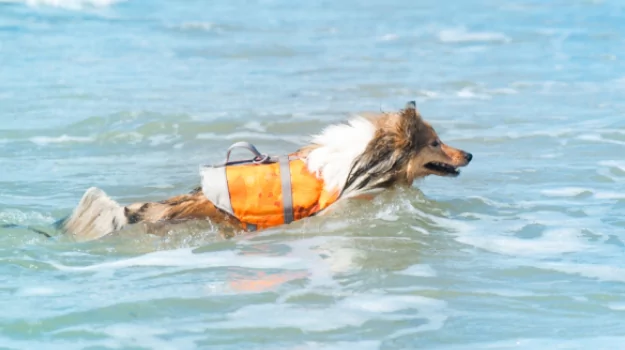
How to Teach Your Sheltie to Swim
Why Teach Your Sheltie to Swim?
Even though your Shetland Sheepdog may be nervous around water, there are numerous benefits to teaching them how to swim:
Fitness. Swimming is an excellent form of exercise, providing all-round muscle strengthening and a good heart workout. Since water supports 90% of a dog's body weight, it's especially beneficial for overweight Shelties or those with arthritis, as it allows them to exercise without joint pain.
Stimulation. Swimming enriches our lives and it's the same for dogs! Water play is both mentally and physically stimulating, keeping your Sheltie engaged.
Cooling. The thick Sheltie coat is an adaptation to the harsh, cold winters of the Shetland Islands, which makes them prone to overheating in warmer climates. A quick dip on a hot day helps ward off heat exhaustion.
Hydrotherapy. If your Sheltie ever needs rehabilitation due to joint issues, familiarity with water makes hydrotherapy much less stressful. Hydrotherapy is a pool-based therapy that uses buoyancy, resistance, and pressure to provide weightless physical therapy.
Confidence. If you take regular trips to beachs, lakes, or rivers, teaching your Sheltie to swim helps them become relaxed and playful around water, allowing them to join in on all the family fun.

Our little water Sheltie.
Is Swimming Safe for Shelties?
Swimming is safe as long as your Sheltie is supervised and introduced to water correctly. The main risks include:
Fatigue. Shelties are small dogs with moderate muscle mass so can tire quickly. Always ensure they have an easy exit from the water.
Waterlogged Fur. Their thick double coat can absorb water when submerged, making them feel heavier and potentially dragging them down.
Unfamiliar Currents. Always avoid exposing your Sheltie to strong currents or large waves that can quickly overwhelm a small dog.
To help your Sheltie gain water confidence, a dog life jacket can be a game-changer. It keeps their head above water, adds buoyancy to counteract the weight of wet fur, and is essential if you take them boating. Even if your Sheltie seems cautious of the deep ocean, don't be surprised if they unexpectedly decide to leap in!
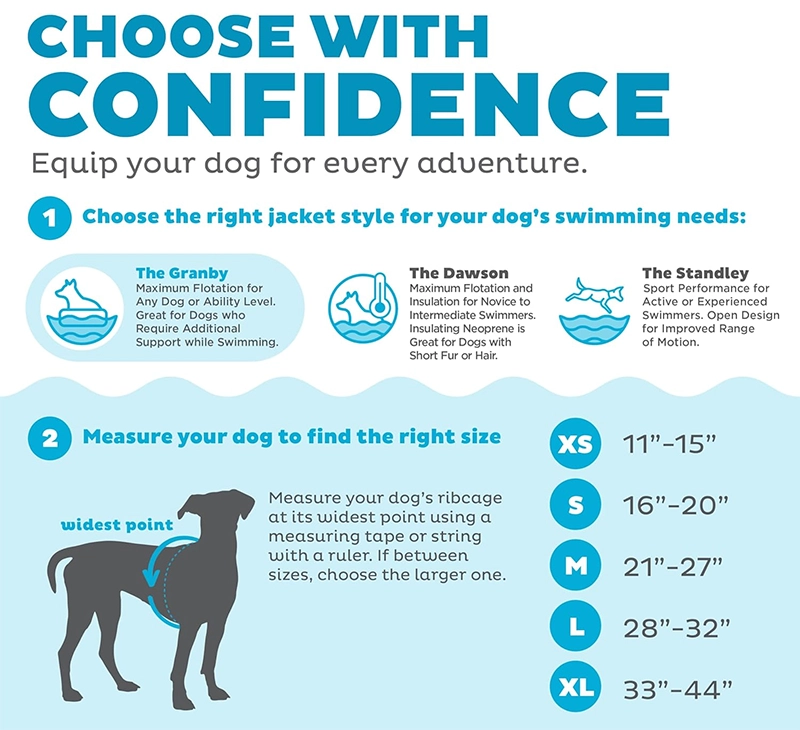
How to Desensitize Your Sheltie to Water
The key is to introduce water gradually, at your dog's pace, building confidence step by step.
Stage 1. Play It Safe
Start with a shallow and calm environment like a children's paddling pool, a stream, or an estuary at low tide. Avoid the bathtub as it's often associated with getting thoroughly drenched against their will. This stage is all about creating positive water experiences.
The earlier you start with water desensitization, the better. Sheltie puppies are much more courageous than adult dogs and will approach new experiences much more readily. Adult Shelties can adapt to water too but it takes longer to build their confidence.
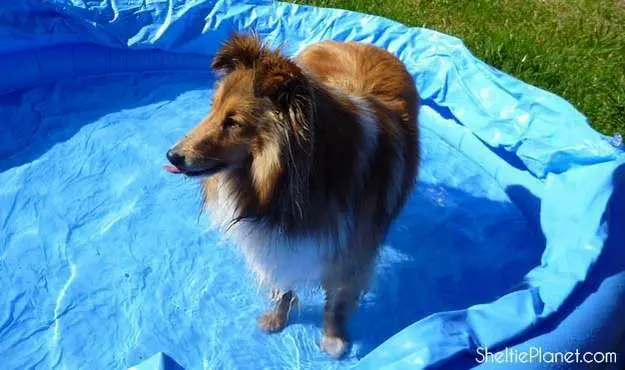
Howard cools off in the paddling pool.
Give your Sheltie plenty of time to approach the water on their own terms. No chucking them in the deep end! Model a calm or playful response yourself by making tiny splashes, dipping your feet in, and showing your happiness. They'll pick up on your mood and, eventually, their curiosity will outshine their fear.
When Howard was a puppy, we took him to an estuary at low tide. This left huge empty sand beds with little streams running between them. We strolled through the smallest streams, and Howard instinctively followed us, wading through the very shallow water that stayed well below his chest. Way to go Howard!
Stage 2. Build Water Confidence
Once your Sheltie is comfortable wading through shallow water, gradually introduce them to a larger, calm body of water like a bay or lake with little to no waves. Walk in ankle-deep and let your Sheltie follow. If they hesitate, stay nearby and encourage them with happy, playful behavior. Let them progress at their own pace; some dogs dive in while others can take weeks. It's important to let them build confidence at their own speed.
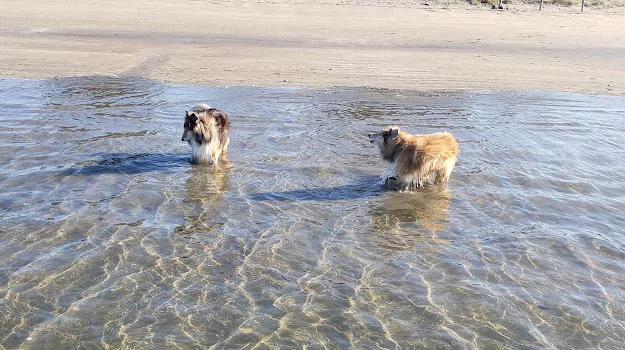
Piper and Howard paddling their safe distance into the sea.
We went to the estuary often to gauge Howard's reaction before moving onto something bigger: a shallow bay with barely any waves. We walked in to our ankles and he followed us in. Great! But when waded out to knee-depth, his fear kicked in and he whimpered and cried, calling us back. Rather than demand and pressure him, we modeled playful and after a minute or so, couldn't resist but wade in up to his chest, just to be in on the fun!
Stage 3. Start Swimming
When your Sheltie is confident enough to enter the water up to their chest without help, they're ready to start swimming. All dogs have an instinct to doggy paddle—so at no point do you need to physically teach your Sheltie to swim!
To start swimming, hold your Sheltie gently in the water and support their belly. Lift them slightly and move them deeper until they naturally start paddling. Once they get the hang of it, let go and allow them to follow their instinct to swim back to shore.
All dogs instinctively paddle when placed in water, but some take longer to build confidence. The key is repetition and encouragement. Howard was hesitant at first, but after a few short swims, he seemed to start enjoying it. It's also kind of cute when you lift them clean out of the water and their continue to paddle in the air! Silly beans.
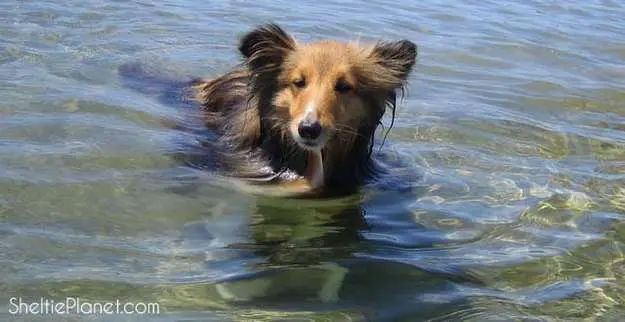
Our sweet Shetland Sheepdog Piper testing out the ocean.
Final Thoughts
Teaching your Sheltie to swim won't necessarily transform them into a water-loving Labrador, but introducing them to water does significantly reduce their fear and gives them another way to enjoy life. Even if they prefer just wading through the shallows over full-on swimming, the physical and mental benefits boost their quality of life.
Remember that under all that fur, Shelties are small dogs with limited muscle mass. Offer frequent opportunities to rest, avoid swimming if they're visibly anxious or exhausted, and always supervise to ensure their safety.
Follow this gradual desensitization plan and your Sheltie can learn to have fun in the water when it suits them. Whether it's paddling in the shallows, chasing waves, or swimming alongside you, teaching your Sheltie to swim will ultimately enrich their life.
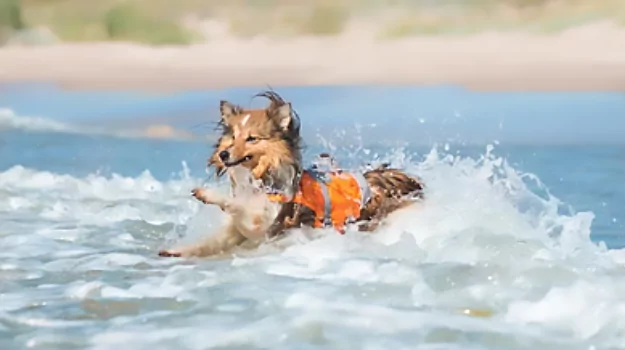
Shelties enjoy swimming once they have water confidence.












